Get registered dietitian approved tips for eating healthy on a budget. If you are trying to stretch your food dollars while putting healthy foods on the table, I’ve got 100 actionable tips to get you started.
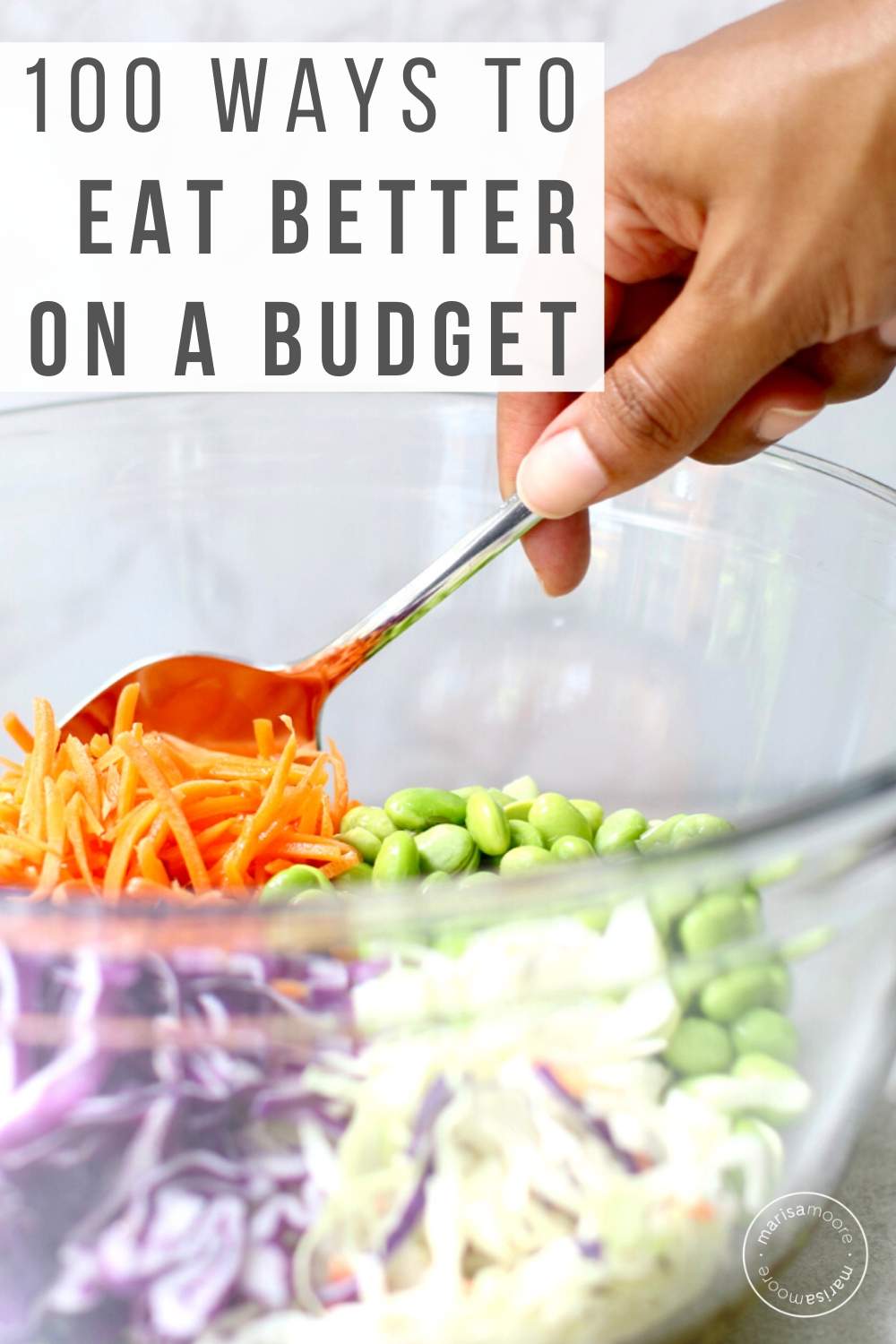
Eating healthy on a budget can be a challenge – especially with the price of food right now. It’s common to think it’s healthy foods cost more than less healthy ones. But the good news is that some of the healthiest foods are also the cheapest.
Easy ways to eat healthy on a budget
- Plan your meals and snacks each week.
- Eat fruits and vegetables that are in season. You’ll get top nutrition and pay less for pears and sweet potatoes in fall and berries in the summer, for example.
- Focus on cheaper fruits and vegetables like bananas, apples, oranges, potatoes, spinach which are priced well all year long.
- Buy “ugly” produce marked down at the supermarket. While you want to skip any with heavily bruised or broken skin, imperfect-looking produce is safe to eat but can’t claim top dollar in most main grocery stories
- Buy salad greens by the head versus bagged.
- Consider cabbage. Humble green cabbage is a healthy option and perfect for topping tacos, roasting or steaming.
- Include seeds like sunflower and pumpkin seeds for a healthy snack.
- Eat cheaper nuts like almonds and peanuts.
- Buy nuts in bulk instead of packaged and flavored.
- Wash and chop produce ahead of time to make it easy to grab and go.
- Use the bulk bins to try new-to-you grains, beans, and nuts.
- Make your own hummus. It will taste soo much better.
- Use a variety of grains. Instead of expensive quinoa try brown rice, barley, farro or oats.
- Buy plain whole oats instead of the packaged, pre-flavored ones.
- Eat less meat.
- Eat more plant proteins like lentils, chickpeas, and beans.
- Stretch taco meat by adding black beans or pinto beans for fiber and protein.
- Try eggs for a cheap protein at meals and snacks.
- Eat sardines. These are a cheap and sustainable source of omega 3s!
- Choose cheaper cuts of meat (like chuck or rump roast). Use a slow cooker to cook them low and slow to become more tender.
- Buy the whole chicken instead of the parts.
- Use canned salmon and tuna for protein-rich meals and snacks.
- Bake a batch of homemade granola every week.
- Make your own nut butter.
- Make your own homemade applesauce.
- Blend and strain your own homemade almond milk, oat milk, and pecan milk!
- Shake up homemade salad dressing instead of buying bottled.
- Bake your own kale chips. They are ridiculously expensive in the store!
- Pop fresh popcorn using kernels from the bulk bins.
- Make your own stock. Simmer vegetable scraps and/or bones to create a flavorful stock.
- Drink water at home instead of sugary beverages.
- Season your food. Eating healthy should still taste good or else you might toss it.
- Brew your own coffee at home. No more $5 lattes!
- Steep tea to sip at home. You can buy an entire box of tea for the price of one cup at Starbucks.
- Forget the expensive ingredients. Matcha, protein powder, truffled anything, and other ingredients are not required for good health.
- Keep things simple. Healthy doesn’t equal fancy.
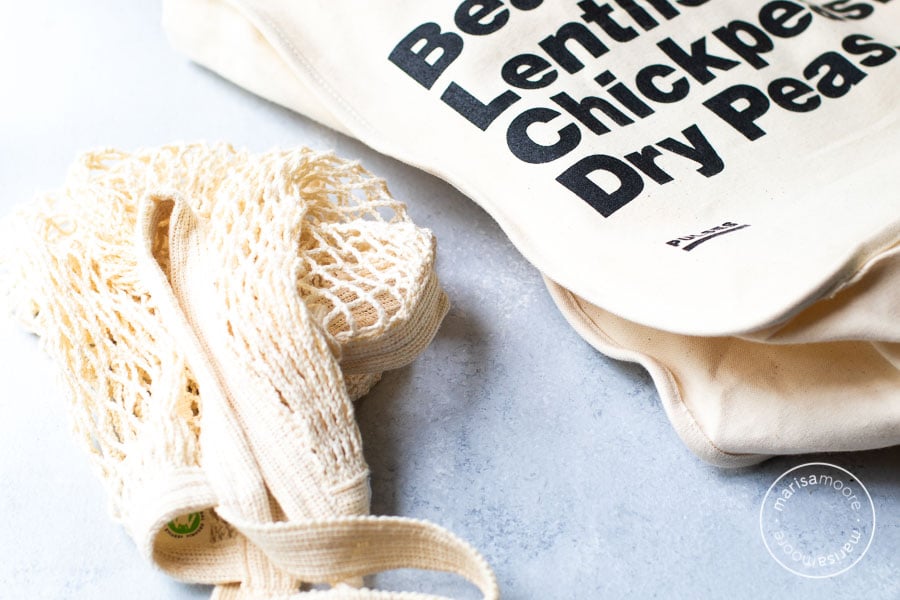
Shop with your budget in mind
- Stick to your grocery list.
- Use coupons on foods you were already going to buy.
- Check the unit price. Sometimes the bigger package is a better deal.
- Don’t buy all organic. It’s not necessary.
- Resist the impulse buy at the checkout counter.
- Spend less time in the supermarket. Studies show the longer you’re in the store the more you spend.
- Buy generic or store brands for the basics.
- Look for private-label organic options at supermarkets, Sprouts, Aldi, and Trader Joe’s. (Also see #40.)
- Don’t shop when you’re hungry. You will buy more.
- Buy whole foods. Precut fruits and vegetables cost more.
- Buy dry beans, peas, and lentils. Cook them from scratch.
- Purchase low-sodium canned tomatoes, pumpkin, and beans.
- Swap where you can. Buy spinach and chard if it’s cheaper than kale or a different shaped pasta if it’s on sale.
- Choose the cheapest lettuce. There’s very little nutrition difference between romaine and green-leaf lettuce!
- Skip junk foods – most of the time.
- Make double of your favorite meals. This saves time and effort meaning you are less likely to order takeout.
- Shop the bargain bin at your local farmer’s market.
- Join a CSA – short for Community Supported Agriculture.
- Sign up for Thrive Market or other healthy online food retailers to score deals.
- Visit international markets to buy spices for less.
- Buy ingredients like rice noodles and chickpea flour at Asian food markets.
- Skip the shiny new ice cream or treat that you didn’t intend to buy.
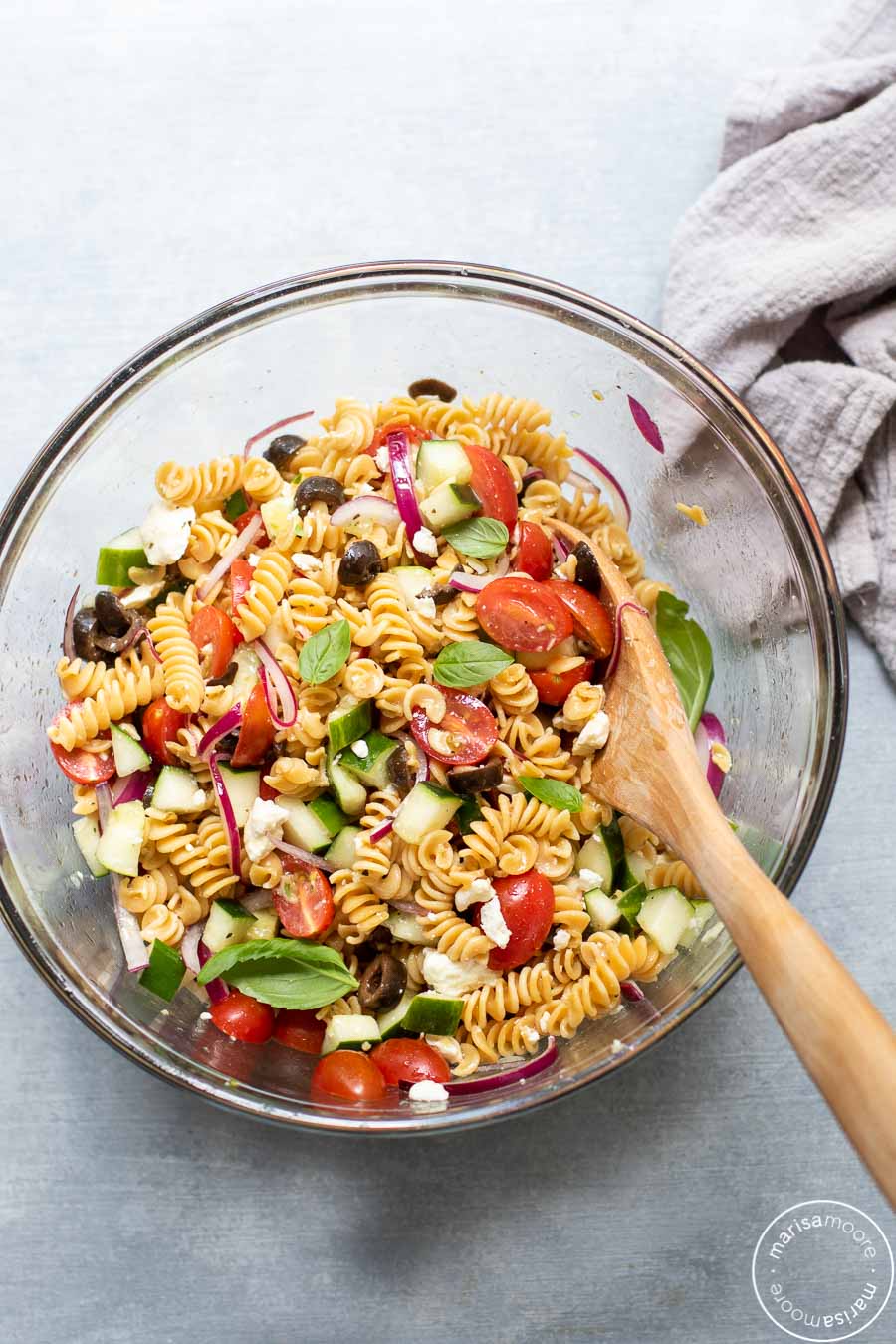
Eating away from home
- Eat out less often.
- Pack your own lunch. Make a bowl or pasta salad for a healthy lunch option that travels well.
- Carry a nut butter sandwich and piece of fruit for a meal or snack. And be sure to take along plenty of healthy snacks for the plane when traveling.
- Opt for fast-casual restaurants like Chipotle or Panera instead of full service to save. Or you might pack, road trip friendly meals when going by car.
- Eat out at lunchtime instead of dinner to save money.
- Split an entree and add a salad at dinner.
- Take home leftovers for lunch or dinner the next day. And remember to eat them.
- Order water instead of a soft drink.
- Skip dessert unless it’s really good. It’s marked up!
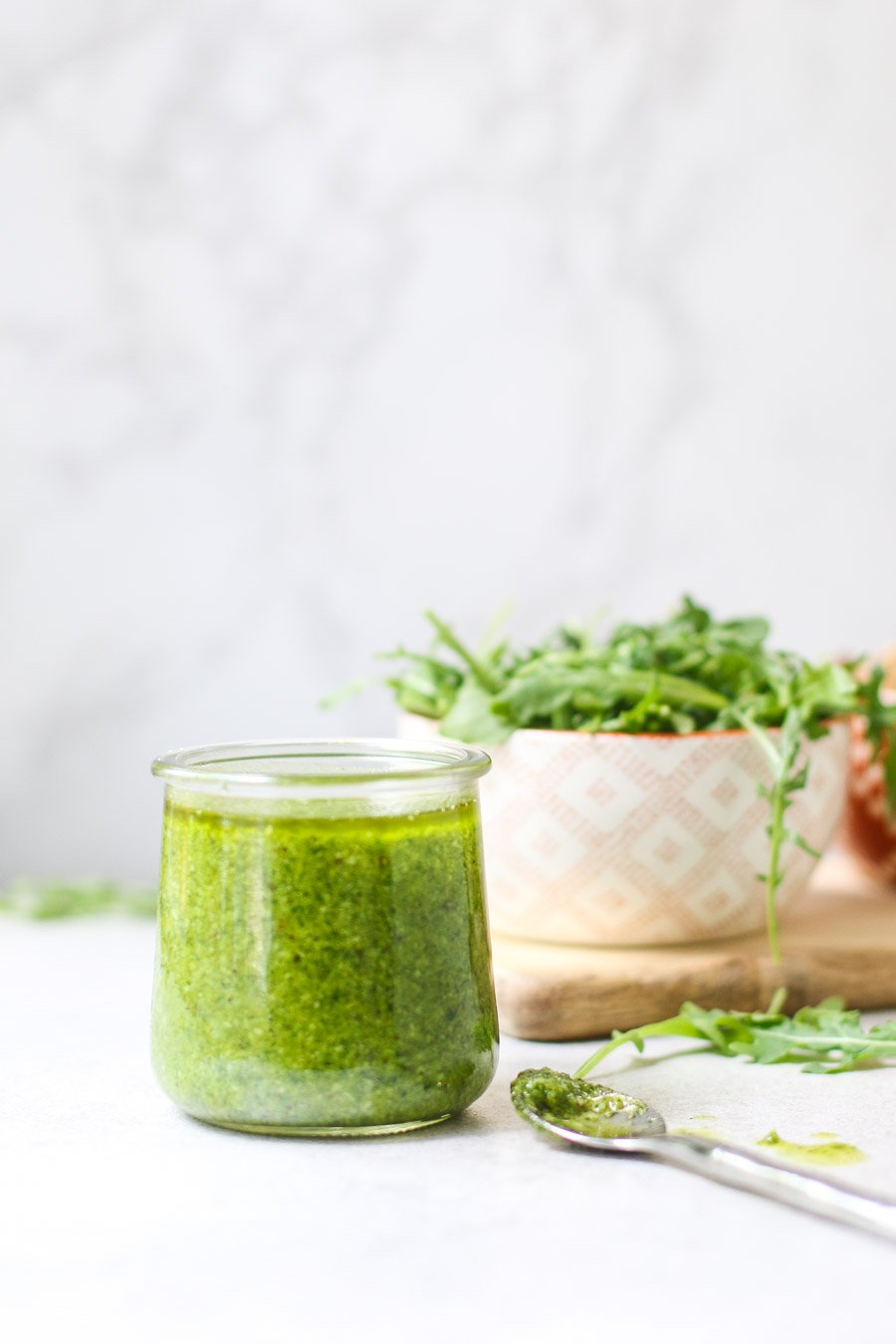
Waste less food
- Keep your pantry clear of clutter. Not knowing what you have can lead you to buy duplicates.
- Organize your freezer and refrigerator so you know which foods you have.
- Take inventory. Knowing what you have helps you reduce waste and spark creative meals.
- Plan meals using the foods you have on hand.
- Use up the foods you have in the kitchen. Food waste in the US is a major issue both at home and out. And it’s costing money. One study found that the average family tosses over $500 a year in spoiled food. Use it, don’t lose it.
- Repurpose leftovers. Add an egg to last night’s fried rice for a quick lunch. Grate leftover whole carrots to make easy Carrot Cake Pancakes.
- Blend wilting greens or herbs into pesto or sauce recipes.
- Puree leftover fresh berries into a sauce for pancakes, waffles or ice cream.
- Blend leftover milk or yogurt into fruit pops that can be enjoyed well beyond the expiration date.
- Keep greens dry to reduce spoilage.
- Store herbs wrapped in a dry napkin (cloth or paper) in the crisper to keep them fresh longer.
- Pulse stale bread in a blender to make breadcrumbs. Freeze to use later.
- Slice, then bake leftover pita bread or corn tortillas to make chips.
- Cut day-old bread into cubes. Toss with olive oil and herbs. Bake for homemade croutons.
- Dehydrate fruits and vegetables to preserve and enjoy later.
- Don’t immediately toss “expired” foods. Most are still good after the sell-by date.
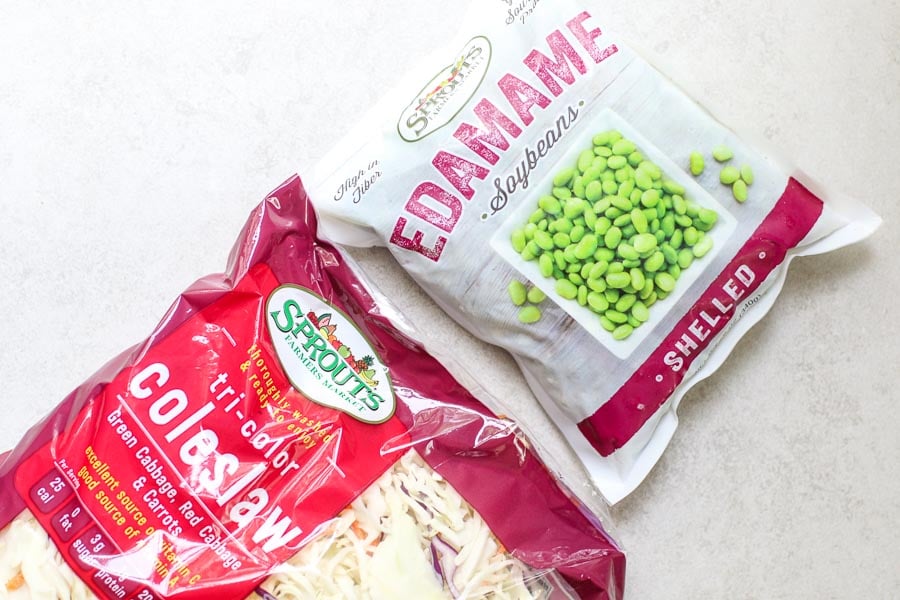
Use the freezer to save money
- Package and label foods well – with the food name and the date.
- Buy frozen vegetables. Frozen vegetables are just as healthy as fresh. Just choose the ones without added salt or sugar.
- Freeze fresh, in-season berries, peaches, and other fruits the day you buy them to enjoy later in the year.
- Freeze fresh, in-season vegetables like sweet corn and green beans the day you buy them to enjoy later in the year.
- Buy frozen seafood instead of fresh. It’s generally cheaper and won’t go bad in a couple of days.
- Freeze extra chopped onions, peppers, and carrots to toss into a saute, soup or chili.
- Wrap and freeze blocks of cheese before they go bad.
- Freeze leftovers. Soups, chill, pasta dishes, and casseroles are ideal for thawing and reheating for quick, healthy weeknight meals. Seal foods in freezer-safe containers. They will last 3 months and longer.
- Stock up on frozen foods when they are on sale. Check circulars and store apps for sales.
- Freeze leftover tomato paste, pesto, sauces into ice cube trays to use later.
- Freeze bread if you won’t eat it all before it goes stale. Wrap it first.
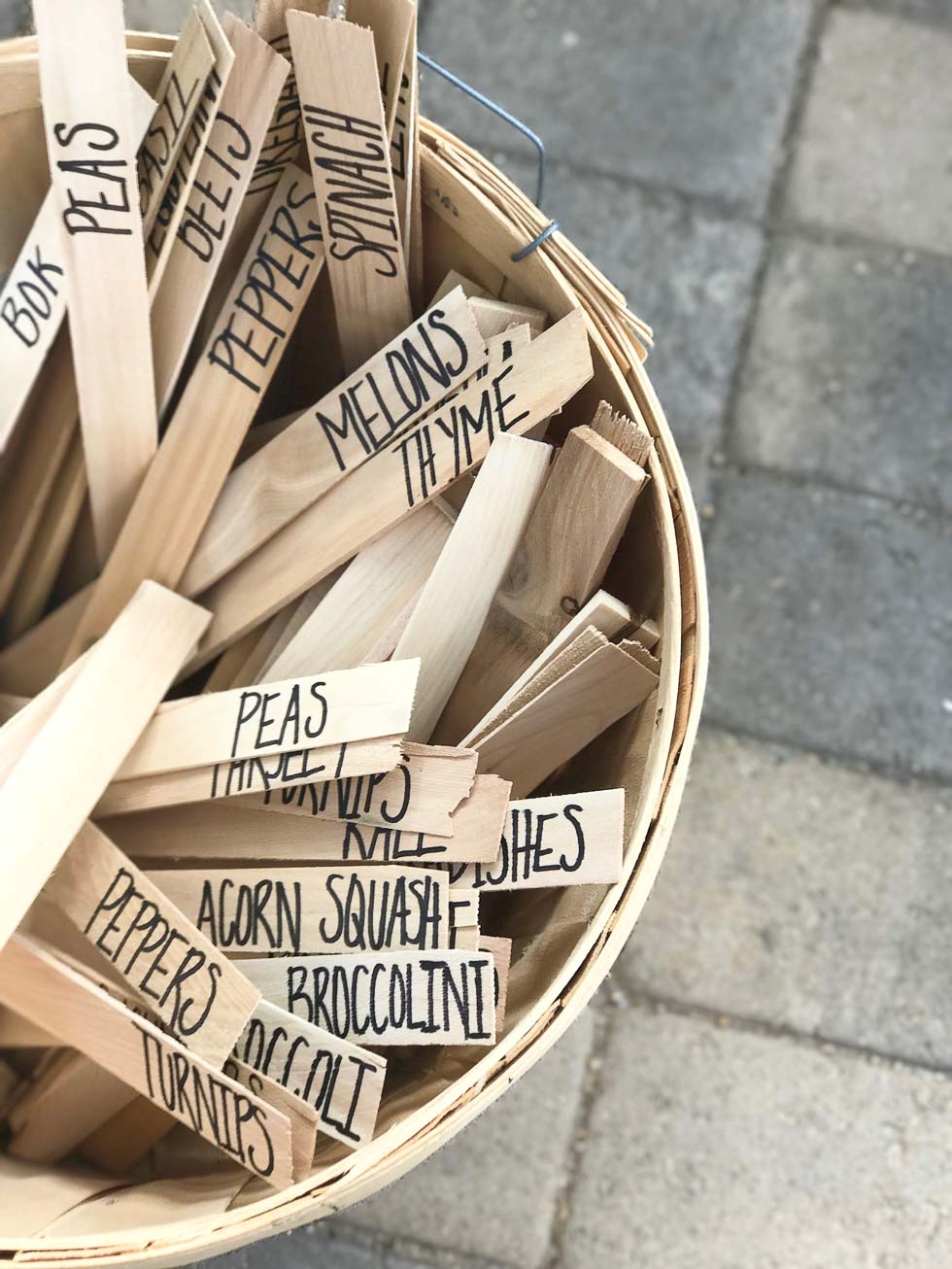
Grow your own food
- Grow your own herbs. You can start with a plant from the grocery store produce section. Just replant it and place it in a sunny windowsill or garden.
- Regrow lettuce. It actually works and is a fun science project for kids. Keep it going and you won’t have to buy lettuce for a while!
- Regrow celery. Celery adds delicious depth of flavor to soups and stews so it’s the perfect budget-friendly flavor saver!
- Plant and grow tomatoes, cucumbers and salad greens outside your door.
- Join a community garden where you can swap for variety.
- Volunteer at a local farm. You might be able to get fresh produce if they have extra.
Did I miss anything? Share your ways to save money and eat well below!

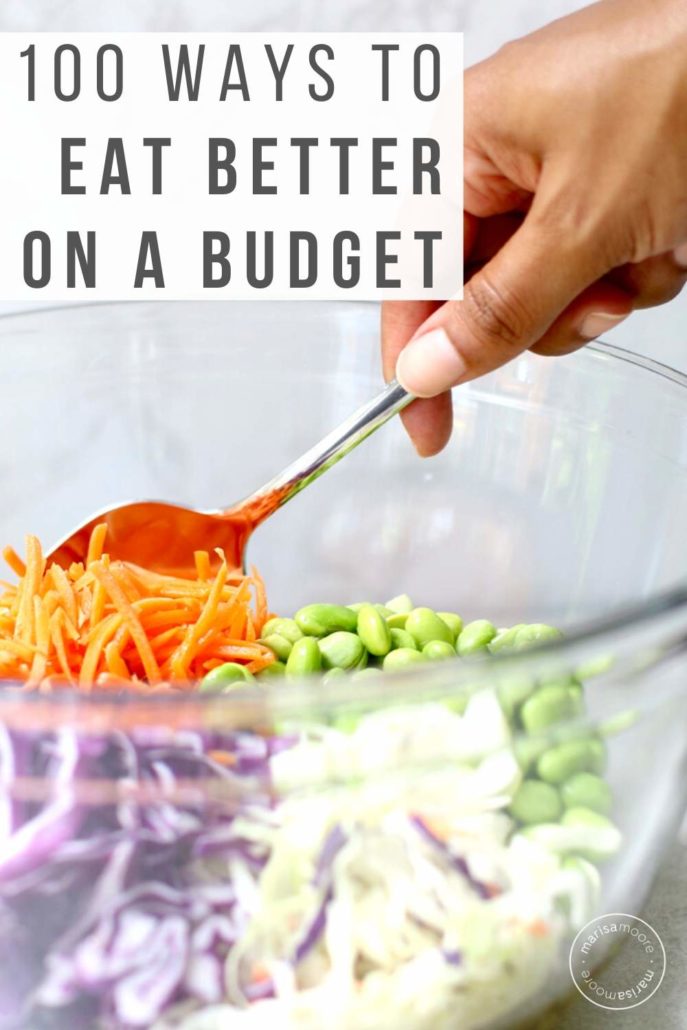
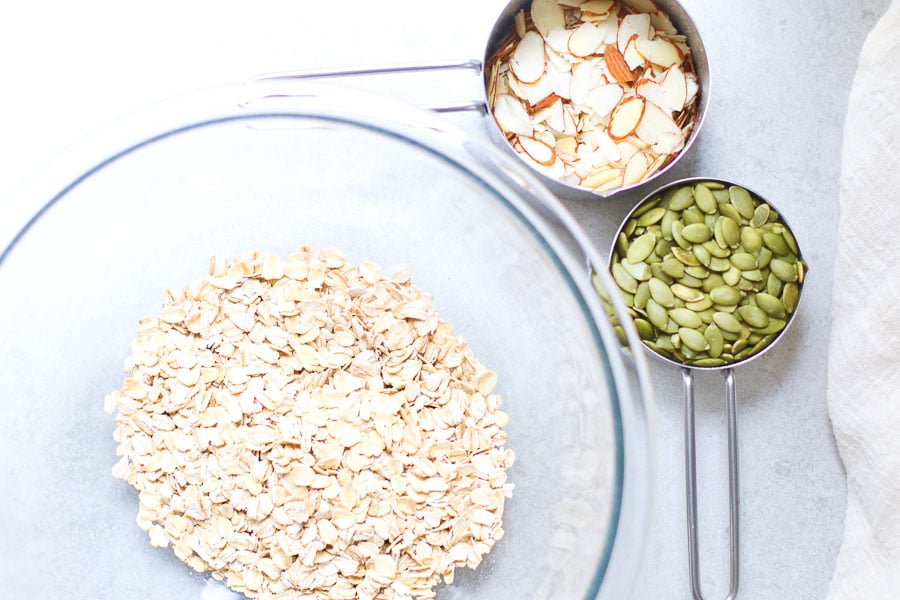
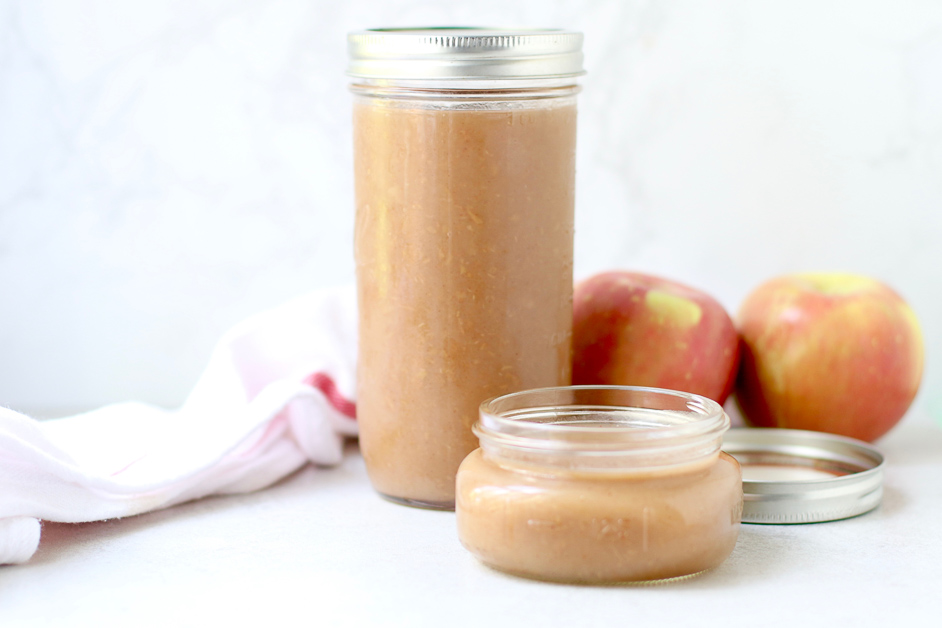
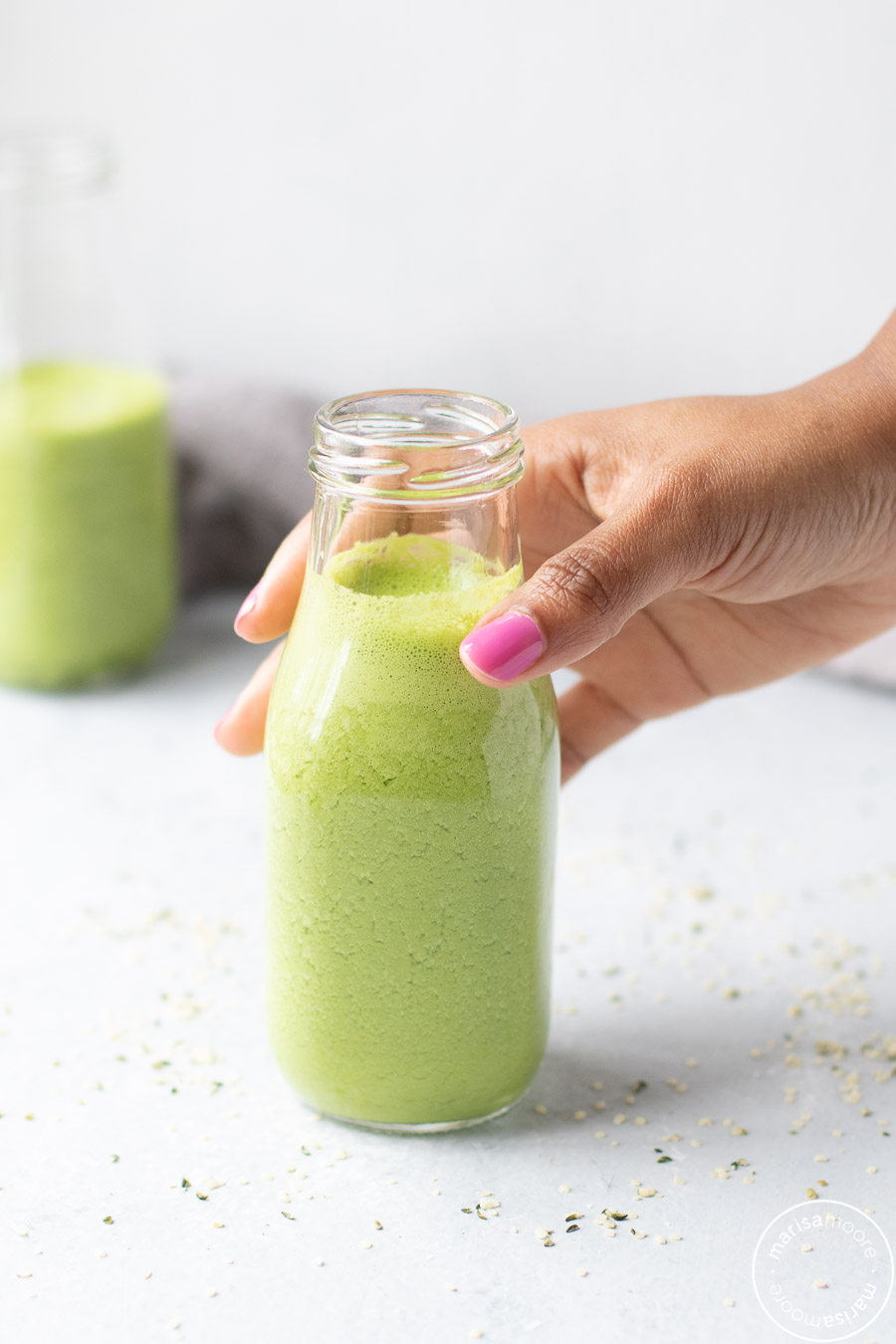

Leave a Reply